The Motive Behind Motif
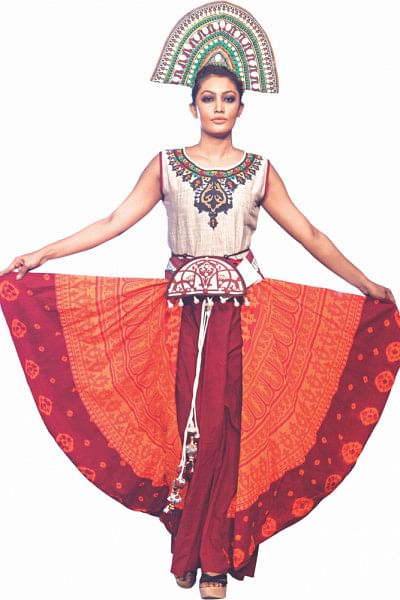
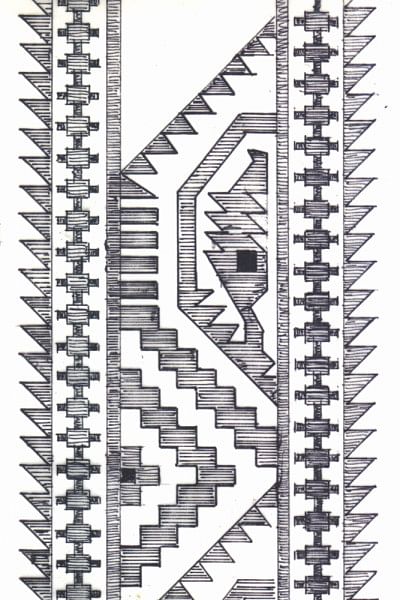
Motifs —decorative images used to unify an elaborate design or even an idea— have probably existed since the dawn of civilisation. They can be found in people's everyday lives and activities. In fact, if you look closely, you will notice that there are motifs in every object, starting from the basic clovers on your bedroom curtains to the clay planters sold on the roadside. Paisleys, a common and popular form of motif in the South Asian region for instance, was inspired by the shape of a simple 'aam' or mango.
Having a vast range of knowledge on motifs, value additions and techniques of South Asian textiles, Maheen Khan, veteran fashion insider and Managing Director of Mayasir, makes it a point to design something refreshingly stylish yet functional whenever picturing a new collection. When mapping out motifs, she likes to develop a signature style that stays at par with global trends, yet keeps a strong grip on her traditional roots.
“As a designer or an artist you can be inspired by just a single floral motif or the form of foliage and develop that into an entire collection,” Khan says. She described motifs and value additions as a design formation or 'naksha' done on different objects to adorn them and make them more attractive and interesting.
MOTIFS ON EDIBLE ARTS
“Take shondesh and pitha for instance; two incredible edible arts of Bangladesh,” Khan continues eagerly. While the basic ingredients (milk and sugar for shondesh and flour, sugar and molasses for pitha) are very similar everywhere, the taste could vary in different regions.
“The core idea of drawing out such patterns on food was not just to enhance its appearance, but to develop elements that reflect the artisan's lifestyle,” she explained.
The fish, for example, is a common shondesh mould, as fish is very significant in Bengali culture. Without fish, we would be incomplete in terms of lifestyle, and this is precisely how motifs reflect our day to day lifestyle. She further added that using date thorns to outline delightful designs on nakshi pithas is another interesting technique used to make edible arts of Bengali heritage.

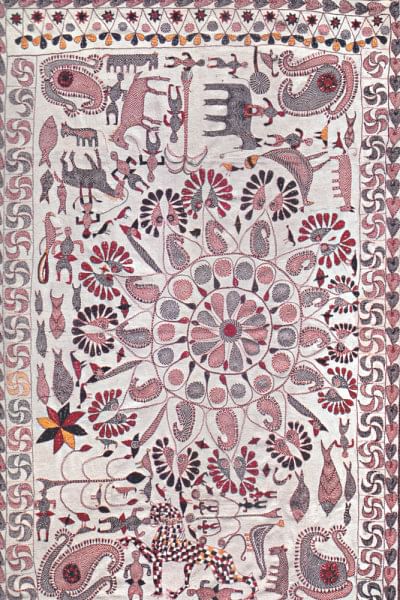
NAKSHI KANTHA
For decades, 'nakshi kanthas' have been well-known to communicate a story without words —a story made from intricate workings of the run-stitch in a range of colours, across pieces of fabric.
“Here, you can clearly see that each element sewn on the kantha is telling a story of their daily lives,” Khan adds, pointing out to a vivid image in her collectible book on nakshi kantha motifs.
In the past, nakshi kantha was a storytelling form of embroidery that recorded people's lives and special moments. While human forms, everyday objects and activities (children playing, women doing housework, men fishing, etc.) were major elements in earlier editions of the kantha, today geometric and floral (sometimes, imaginary floral) patterns are more dominant in contemporary motifs.
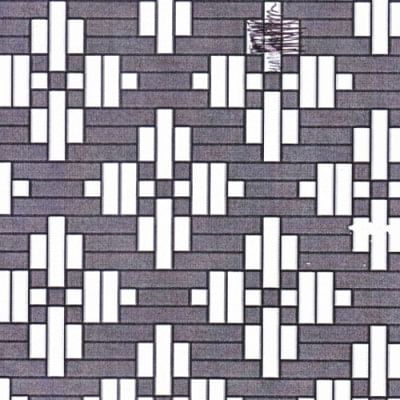
SHITOLPATI
Shitolpatis, also known as nokshipatis are made from murta plants that are grown in the haor area of Sylhet. “This decorative mat was a relief from the scorching summer heat as people would lay it down on their beds and lie on it to cool themselves,” Khan elaborated on the origin of its name, which literally comes to “cool mat.”
Although there is a wide range of designs that can be developed, traditional shitolpatis tend to follow a geometric pattern. For better understanding, Khan actively demonstrated with her hands how the weaves are formed in horizontal wefts and vertical warps.
“It's almost like using colours to design on a graph,” Khan explained and added that her recent collection was conceptualised from the patterns of shitolpati.

SHOKH-ER-HARI
The brightly painted pot —shokh-er-hari is not only in high-in-demand when the Bengali New Year knocks on the door but also holds religious significance as 'mangal ghats' to Hindus. At present, they are quite rare in the market and perhaps, only a handful of artisans in Rajshahi are still making them.
“The making process has a set of specific techniques and patterns and seldom go beyond those,” Khan admitted. Bird, fish and floral motifs are common elements painted on traditional shokh-er-hari.
TERRACOTTA ART
From simple everyday motifs on pots at homes to intricate ornamental patterns in temple interiors, terracotta art was widely used in the past. At this, Khan pointed to a marvellous wooden bench adorned with glazed terracotta tiles that was set by her office window. “While glazed tiles are still not available in Bangladesh, there are some exquisite works done on plain burnt terracotta,” Khan remarked.
MONOTONY IN MOTIFS
While sometimes designing requires constant innovation, redesigning a traditional motif can be quite a tedious task.
“As a revivalist, I firmly believe that certain aspects of heritage should not be distorted,” Khan said. “You can simplify it but not distort.”
Craftsmen tend to break down the original design of Jamdani and Tangail saris which absolutely distorts the formation. “In fact, today more and more saris are being woven with jacquard machines instead of by hand, and many motifs and designs are blatant imitations of the patterns found in Indian saris,” informs Khan, disappointedly.
However, she added that the National Crafts Council of Bangladesh is working to develop a book of 'Shuddha' (pure/genuine) motifs. In Khan's opinion, the best way to add a refreshing touch to a traditional motif is to simplify it without altering its aesthetic form. In this sense, less is actually more.
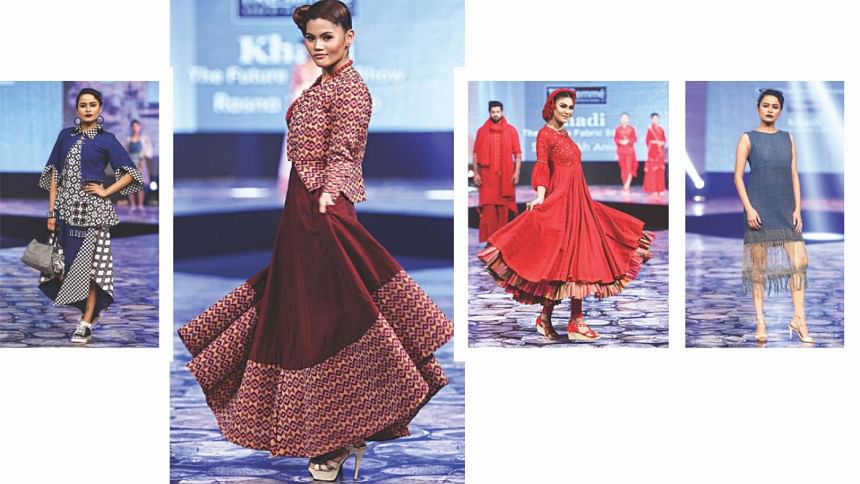

ARE TRADITIONAL MOTIFS DISAPPEARING?
Although a variety of traditional motifs still hold invaluable significance to our heritage and culture, a handful of factors, primarily lack of sufficient patronage, are leading to the silent demise of many motifs and art forms, and along with it, the source of livelihood for many families.
“There is little innovation in sweetmeat or pitha in stores and the urban crowd usually avoids serving traditional foodstuff unless there's a special occasion,” said Khan. While our lifestyles have evidently changed with fast-changing society and advanced technology, there are still many effective ways to hold onto to our traditions.
“Well, firstly, I think the quality of the products that use traditional motifs should be improved to make it more durable and exportable,” Khan began. Burning terracotta items for a longer period of time, for instance, can ensure greater durability, and higher investment in such goods could ensure better quality. Khan also believes that every item should have some utility besides its decorative appeal.
Moreover, congestion and environmental pollution are other 21st century nuisances to keep in mind. Motkas (earthen pots) that were previously used to store food or for decorative purposes could now be revamped to be used as planters for some potted greenery.
Furthermore, fast changing lifestyle and higher disposable incomes has led consumers to avoid buying niche goods such as the shitolpati. In Khan's point of view, all rounded support in this sector is crucial to help the dying culture.
“The best way to promote is through exhibitions, awareness and communication with people,” Khan elaborates. In her opinion, to revive the living arts of Bangladesh, we ought to take it to the next level and find efficient ways to market the product through creating awareness.
Apart from these, proper archiving and documentation of designs is equally essential to preserve them well so that current and upcoming designers should be able to access them and work on them and be inspired by them en masse.
Photo: Studio Lorenzo, Farhan Ahmed
Photo of motifs provided by Maheen Khan

 For all latest news, follow The Daily Star's Google News channel.
For all latest news, follow The Daily Star's Google News channel. 



Comments